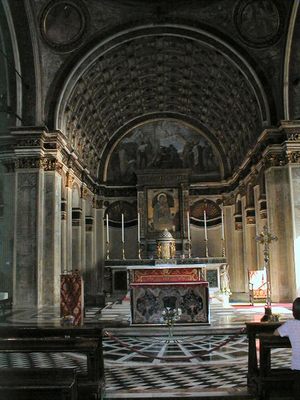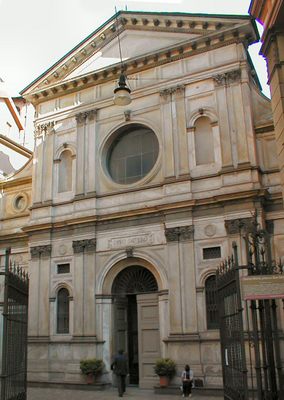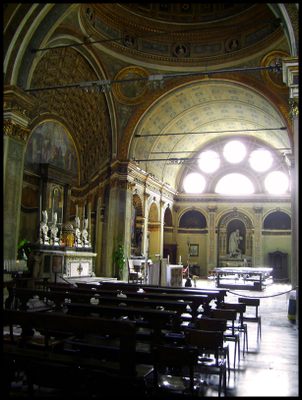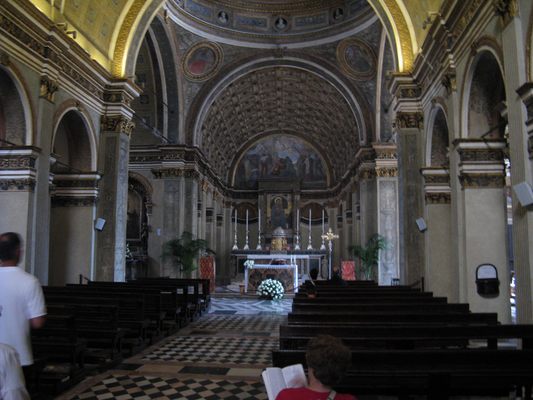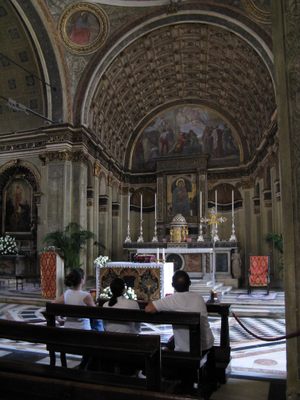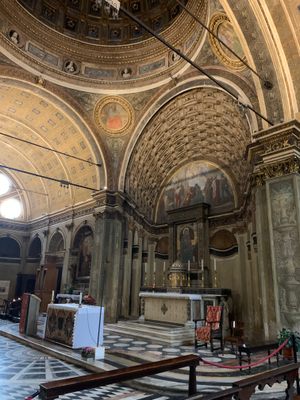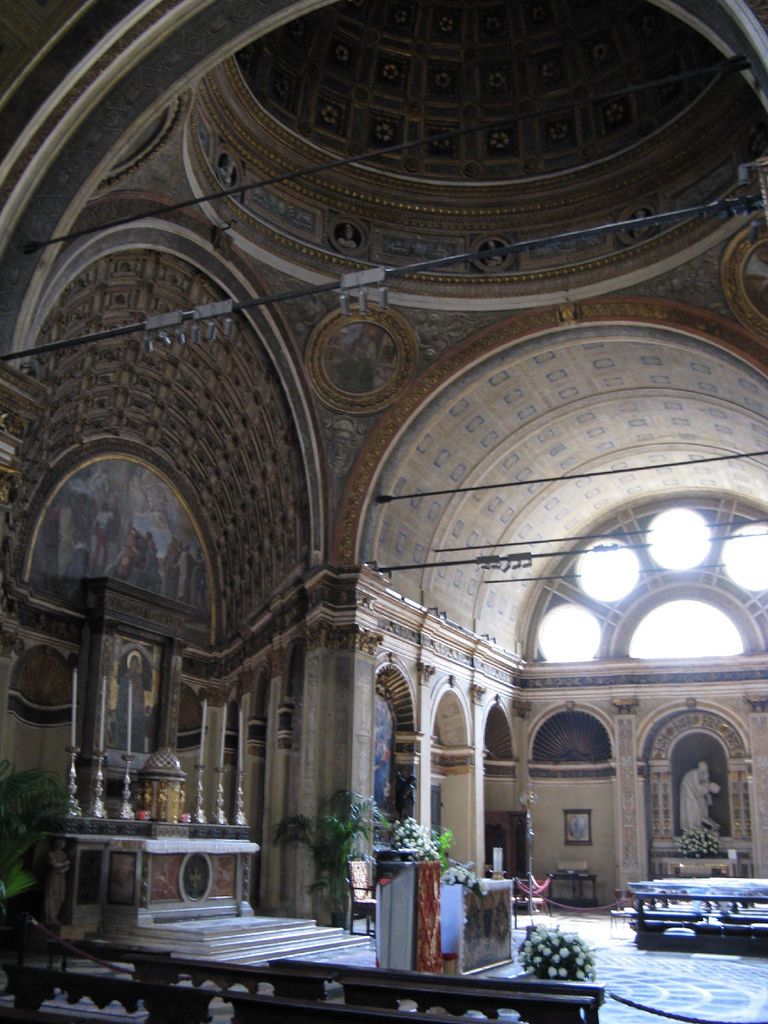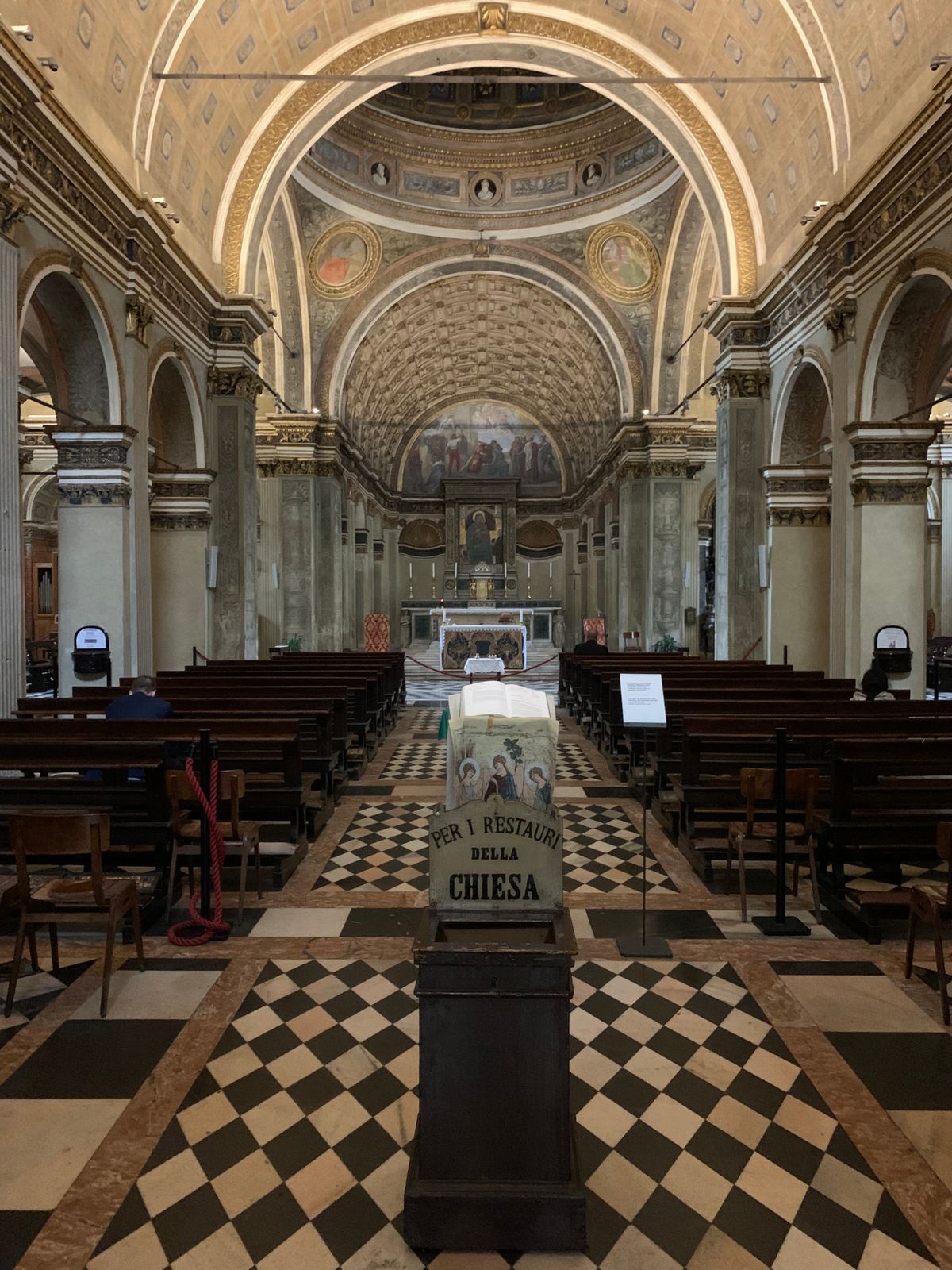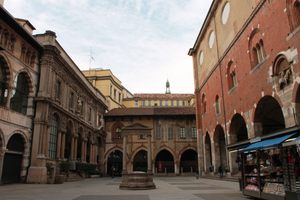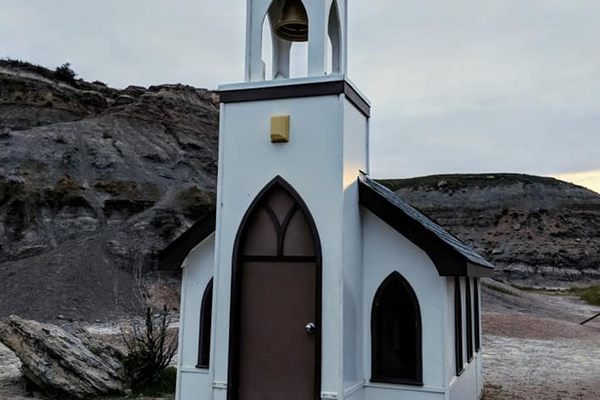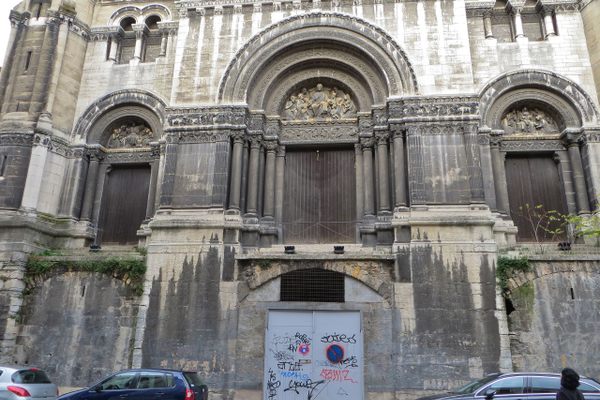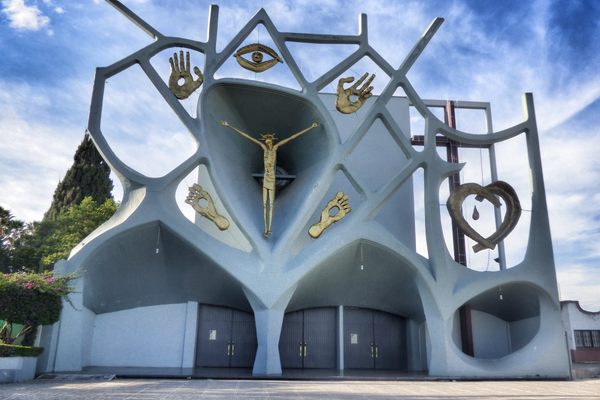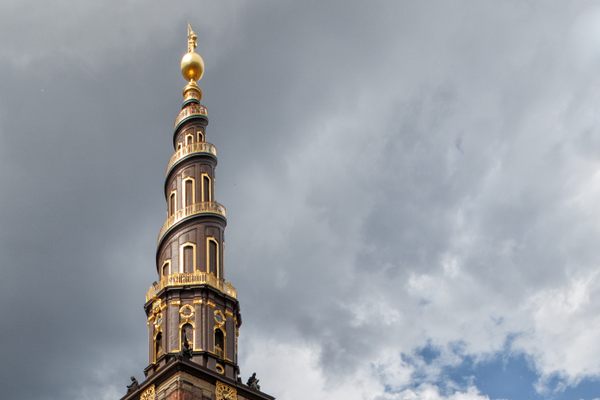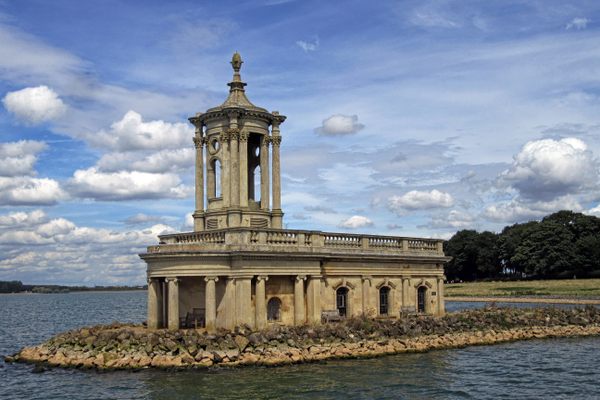About
Many famous architects and painters participated in creating the wonders of renaissance Italy, but it takes a special kind of talent to fit a big church on a tiny plot.
Donato Bramante was such a man. In 1472 Duke Galeazzo Maria Sforza of Milan commissioned a new church for his city. His ambitions were great but the location available to him was limited by the presence of a busy street. The choir, the space behind the altar, had to be truncated, making the church awkwardly short. Undeterred by such an obstacle, Bramante devised an ingenious solution. He painted an optical illusion.
Trompe-l'œil, or architectural optical illusion was popular in late renaissance and baroque, but Bramante took the visual deception to an entirely new level. Standing at the entrance of the edifice one has an impression of a much deeper space, extending further behind the altar than is physically possible. The optical illusion is helped by the somewhat predictable light conditions inside the building. The illusion, of course, quickly disappears as one steps aside from the main axis of the church, but step back and the magic reappears. Like religious belief itself, correctly seeing Bramante's Santa Maria presso San Satiro church is all about perspective and faith.
Related Tags
Know Before You Go
Take M1 metro line to Duomo station.
Community Contributors
Added By
Edited By
Published
December 2, 2009
